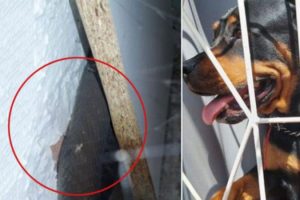It evaded human eye and touch for years but finally it came under scanner last year, 2020. The species one is referring to is the Hispaniolan Vine Boa which was found in the Caribbean island of Hispaniola.
Remarkably this snake remained undiscovered for more than a century. Named after the island its scientific name is Chilabothrus ampelophis and its characteristics include wide eyes, a unique zig-zagging scale pattern, and a square snout.
According to an article in smithsonianmag.com researchers detected this species in 2020 while they had gone out at night to locate toads. A detailed study about the boa has been published in Breviora which is a journal associated with the Harvard University Museum of Comparative Zoology.
In a statement the author of the study, Robert Henderson, a curator of herpetology at the Milwaukee Public Museum said: "This was a totally unexpected discovery. Although there are three other species of boa already known on the island of Hispaniola, this is the first new boa species to come off the island in 133 years."
Also read: Cannibalism In Australian Cane Toads Triggers Evolutionary Changes
It was the size of this boa that struck researchers when they spotted it as it appeared to be smaller than the others they had seen before. The team of researchers were led by naturalist Miguel Landestoy of the Universidad Autónoma de Santo Domingo in the Dominican Republic, and they discovered six of this new species of boa during their expedition.
Sharing details about the size of known adult boa species, Erin Garcia de Jesus of Science News reported that they can reach two meters or more in length. However, scientists found the longest Hispaniola vine boa — an adult female — that measured less than a metre while the shortest was half a metre long and a young male.
Wanting to make sure that the boa they found was a new species, Landestoy approached Henderson and Graham Reynolds who is a herpetologist based at the University of North Carolina Asheville. This was to get the DNA of the new species analysed, and compare it with other boas of the same region.
Following the genetic analysis, the experts inspected closely and carefully the reptiles molted skin while contrasting it with other five snakes of the area. It is only after this thorough scrutiny and study, that the team stated that the discovered species of boa was new. They also said that it is possible that it may be the smallest boa in the world.
The reptile was named Chilabothrus ampelophis by the team because of its small, slim and long body shape.
Also read: Goa scientists discover a new species of geckos
The statement also specified that while the new boa species for its habitat and shelter was dependent on vines, trees and bushes, it is possible that it may be already feeling the pinch of loss of its domain because of land being taken up for agriculture.
Sharing his views on this aspect in the statement, Reynolds commented: "Habitats where previously hidden boa species are found, such as the Hispaniolan Vine Boa or the Conception Island Silver Boa (discovered in 2016), are dwindling. We are lucky to have discovered these incredible creatures before they could be driven extinct. This discovery is further evidence that we still have much to learn about biodiversity in the region. Our task now is to use their discoveries to recognize the value of wild places in the Caribbean and generate action in preserving natural habitats."




















